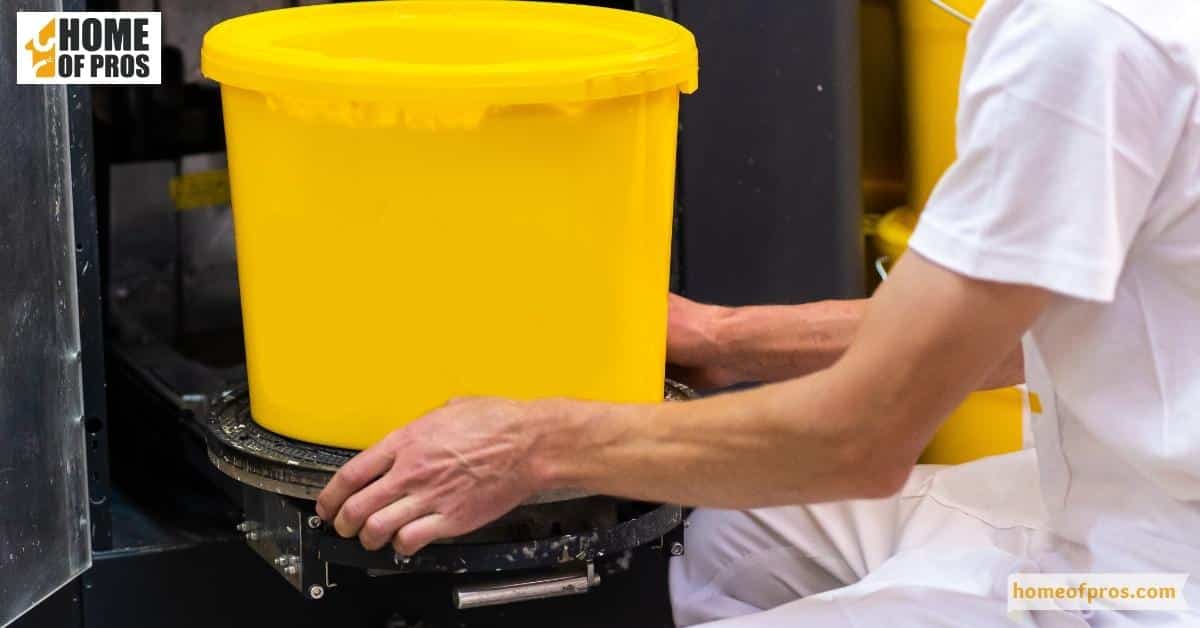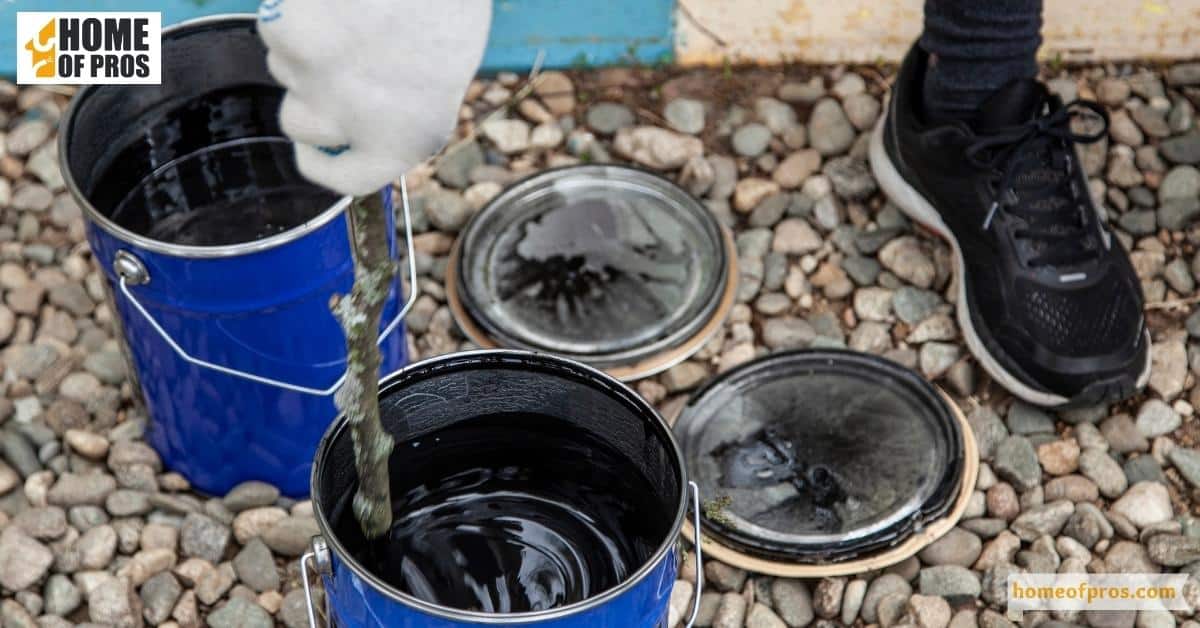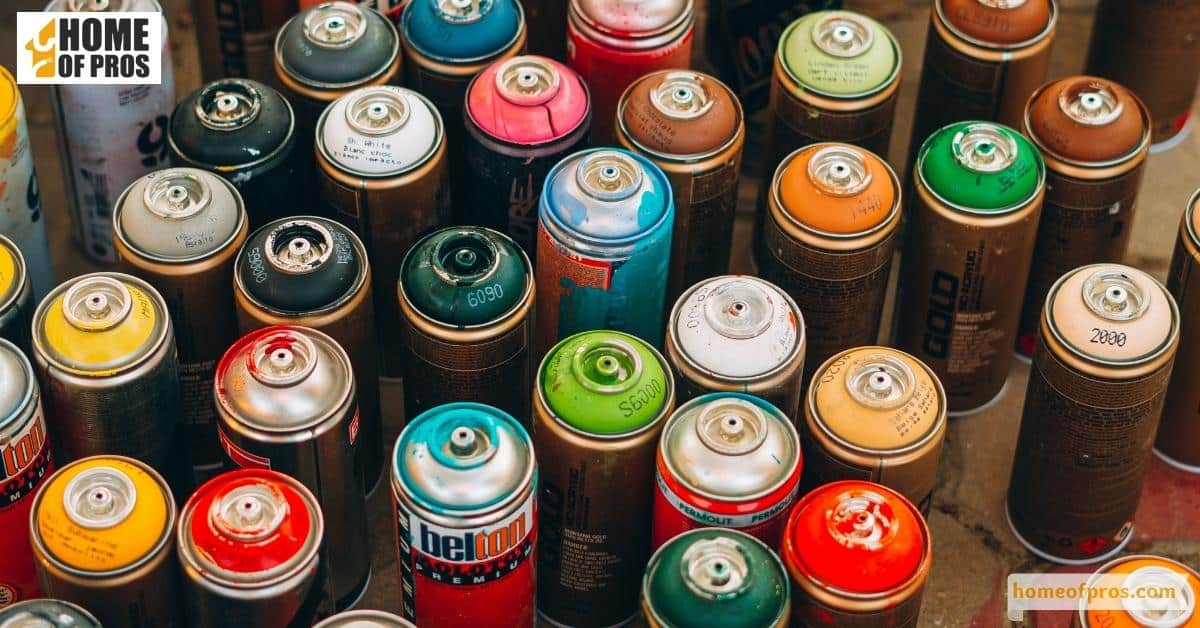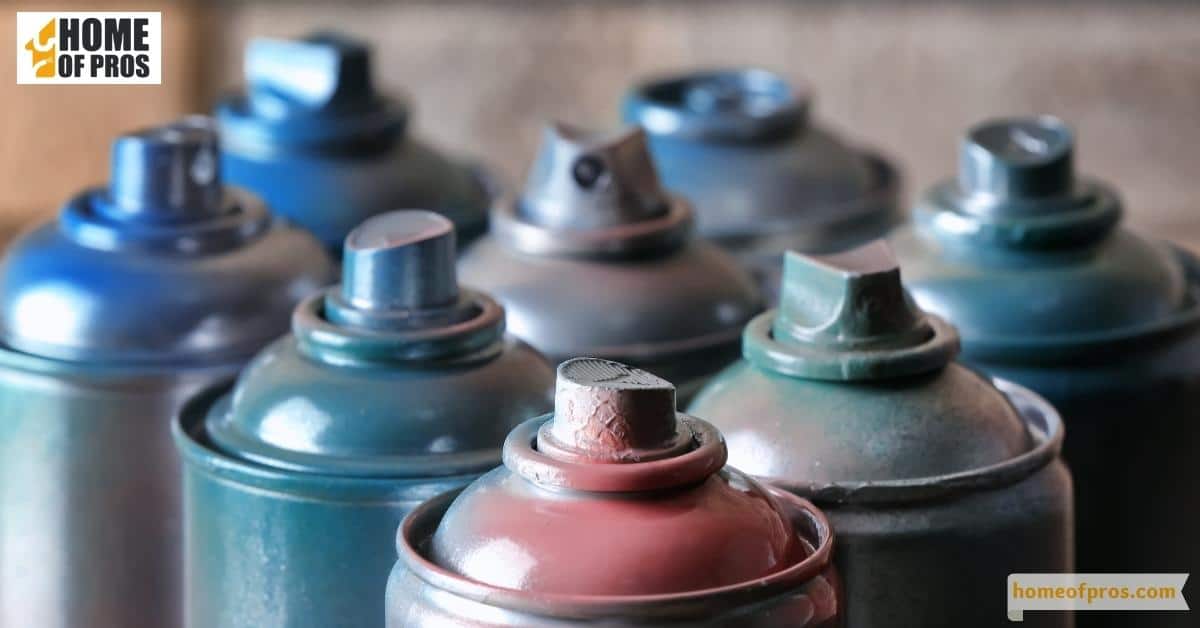Paint and its containers, both full and empty, require special care when it comes to disposal. Whether it’s the remains of that vibrant orange you painted your living room with or an unused can of spray paint from a forgotten project, these materials can’t simply be thrown into the weekly trash.
To properly dispose of paint, distinguish between water-based and oil-based types. Latex & acrylics can be solidified with an absorbent material before throwing away the can. Empty spray cans can be placed in the trash or recycled depending on local regulations. Always leave lids off cans for hauler efficiency.

Composition of paints and their hazards
Before we delve into the methods of disposing of paint cans, it’s essential to understand the composition of the paint and why some of its components can pose hazards.
- Volatile Organic Compounds (VOCs): Most paints contain VOCs that, when released into the air, contribute to air pollution and can cause health problems when inhaled.
- Heavy Metals: Some paints, particularly older ones, may contain heavy metals such as lead or mercury. These metals are poisonous and can be harmful if they infiltrate the soil or water sources.
- Chemical Solvents: Many paints use chemical solvents, which can be harmful if ingested or inhaled, and can potentially contaminate groundwater if not disposed of properly.
To protect both the environment and human health, it’s crucial to dispose of paint and paint cans in a responsible manner.

How to store paint so that it will remain usable?
To extend the shelf life of your paint and keep it fresh for future use, proper storage is key. Mismanagement can lead to the paint drying out or separating, rendering it unusable. Here are some tips to ensure your paint stays in prime condition:
- Seal the Can Properly: Make sure the lid is tightly sealed after usage. Any air exposure can cause the paint to dry out. Utilize a rubber mallet to securely close the lid without damaging the can itself.
- Keep it in a Cool, Dry Place: Store your paint in a cool, dry space. Extreme temperatures, either hot or cold, can ruin the paint. Basements or utility closets often maintain a steady, suitable temperature.
- Store Upright: Always store paint cans upright. This prevents leakage and keeps the paint in its liquid state.
- Avoid Frosting: Never allow your paint to freeze. Once the paint has frozen, it is no longer usable. If you live in a colder climate, it might be best to store your paint inside your house where it’s warmer.

How to Determine If Stored Paint is Usable?
Before deciding to dispose of your stored paint, it’s crucial to determine whether it remains usable. Paint that has been stored properly can last for years, providing you the flexibility to touch up or repaint whenever required. However, some signs indicate that your paint has expired and needs to be disposed of.
Check the Paint’s Appearance and Consistency
To begin, open the can and examine the paint’s appearance. If the paint has separated into layers but mixes well when stirred, it’s still usable. On the other hand, if the paint is chunky, clumpy, or has a foul smell, it’s most likely expired and should be disposed of properly.

Perform a Paint Test
Conduct a paint test on a small, inconspicuous area. Allow the paint to dry completely. If it dries to a smooth, even finish, the paint remains usable. If it clumps, streaks, or has a different hue when dried, it’s best to dispose of it.

Examine the Can for Rust or Leakage
Inspect the paint can itself. If there’s rust or leakage, the paint inside is probably compromised. Rust can mix with the paint, altering its color and consistency, while leakage indicates that the can was not sealed properly, which likely led to the paint’s degradation.
By using these methods, you can evaluate whether your stored paint is suitable for future use or needs to be disposed of. Remember, if the paint is unusable, it’s crucial to follow proper disposal methods to protect the environment and comply with local waste management regulations.

What to Do with Usable, Leftover Paint?
If you’ve determined that your stored paint is still usable, there’s no need to dispose of it. There are various ways to put this leftover paint to use, be it personal or community-oriented. Here are a handful of suggestions:

- Touch-ups: Keep the paint for future touch-ups. Especially when it comes to wall paint, you never know when you might need to cover up scuff marks or scratches.
- New DIY Projects: Unleash your creativity. Use the leftover paint for crafting, furniture revamping, or other DIY projects around the house.
- Donate: Many community groups, schools, or local theaters appreciate paint donations for their art projects or set designs.
- Recycling Programs: Some cities have paint recycling programs. These facilities can remix and repackage paint for sale or donation.
- Swap with Neighbors: Organize a neighborhood paint swap. This can be a fun way to reuse paint and maybe find a new color for your next project.
- Sell it: If you have a substantial amount of good-quality paint left, consider selling it online. There are many people looking for specific paint colors to complete their projects.
Remember, the goal is to minimize waste and make the most out of resources. If the paint is still in good condition, it should ideally be used up rather than disposed of.

What to do with unusable paint?
Unfortunately, not all paint is salvageable. If you’ve determined that your stored paint is unusable and requires disposal, there are several measures you can take to properly dispose of it.
Keep in mind that certain materials may require special handling due to their hazardous components.

- Latex Paint: Most latex paints today are water-based, making them non-toxic and relatively safe. Generally, these types of paints are not considered hazardous waste. To dispose of latex paint, let it dry out completely by leaving the lid off. Once hardened, the can and its contents are suitable for regular trash collection.
- Oil-Based Paint: As compared to water-based paints, oil-based paints contain toxic solvents that can be hazardous to both the environment and human health. To properly dispose of this paint, let it dry out completely or harden it by adding kitty litter, sawdust, or shredded newspaper. Once hardened, the can and its contents are suitable for regular trash collection.
- Spray Paint Cans: If these cans contain any remaining product, they should be used up following the safety directions on the label. If the spray paint can not work or the product is unusable, store it safely until a household hazardous waste collection occurs. If the spray paint can is empty, it can be placed in the trash. Contact local waste officials to find out if recycling of aerosol cans is available in your community or if the cans may be placed in the trash.
- Empty Paint Cans: Leave the lid off the paint cans so that the hauler can see that they are empty. Place the empty paint cans and lids alongside or on top of your trash.
How to solidify the paint
If you plan to dispose of water-based paints, such as latex and acrylics, they must be solidified before throwing them in the trash. This is because when these materials are dumped in landfills, their thin consistency allows them to seep through the ground and contaminate water sources.
To avoid this, add an absorbent material to the paint. This will help it harden and retain its solid shape, thus allowing it to be disposed of safely in the trash. Common absorbent materials include sawdust, kitty litter, shredded newspaper, or even dirt.
Once the absorbent material has been added and fully mixed in with the paint, let it dry completely before disposing of the can. Once hardened, it’s ready for regular trash collection.

How to dispose of spray paint cans (aerosols)
Aerosols should be used up following the safety directions on the label. If this isn’t possible or the product is unusable, store it safely until a household hazardous waste collection occurs.
If the spray paint can is empty, you may place it in the trash. Contact local waste officials to find out if recycling of aerosol cans is available in your community or if the cans may be placed in the trash.
Keep in mind, hazardous waste should never be disposed of down any drain, storm water catch basin, curbside garbage collection, or left in public areas. It’s essential to follow proper disposal protocols to ensure minimal risk to the environment and human health.

What to do when disposing of paint cans?
When throwing away paint cans, it’s important to leave the lid off so that waste-hauling personnel can clearly see that they are empty. This ensures efficiency in the collection process and avoids any risks associated with transporting hazardous materials. Place the empty cans alongside or on top of your trash, and ensure they are upright to prevent leakage.
Now that you know how to dispose of paint and spray paint cans properly, you can declutter your garage or workspace without endangering the environment or anyone’s health. Be sure to follow all safety protocols when dealing with hazardous materials, and store your paint according to the guidelines above. With some care and precaution, you can ensure all your materials are handled responsibly.
The proper disposal of paints and their containers is essential for protecting both the environment and human health.

How to dispose of empty paint cans?
Once all the paint has been utilized, you’re left with an empty paint can. Fortunately, disposing of these cans is fairly straightforward and requires minimal effort. Here are some tips for proper disposal:
- Leave the lid off the paint cans so that the hauler can see they are empty. This ensures efficiency in waste collection processes and avoids any risks associated with transporting hazardous materials.
- Place the empty paint cans and lids alongside or on top of your trash. Make sure to keep them upright to prevent leakage.
- Contact local waste officials to find out if recycling of paint cans is available in your community or if the cans may be placed in the trash.

In conclusion
Paint and its containers are considered hazardous materials due to certain components such as volatile organic compounds, heavy metals, and chemical solvents. As such, they must be handled with extra precaution to prevent any risks or contamination.
To ensure efficiency in the disposal process, it’s important to properly store paint cans so that the materials remain usable for future projects. When disposing of paint, distinguish between water-based (latex and acrylic) and oil-based paints, as each type requires different landfill procedures.












